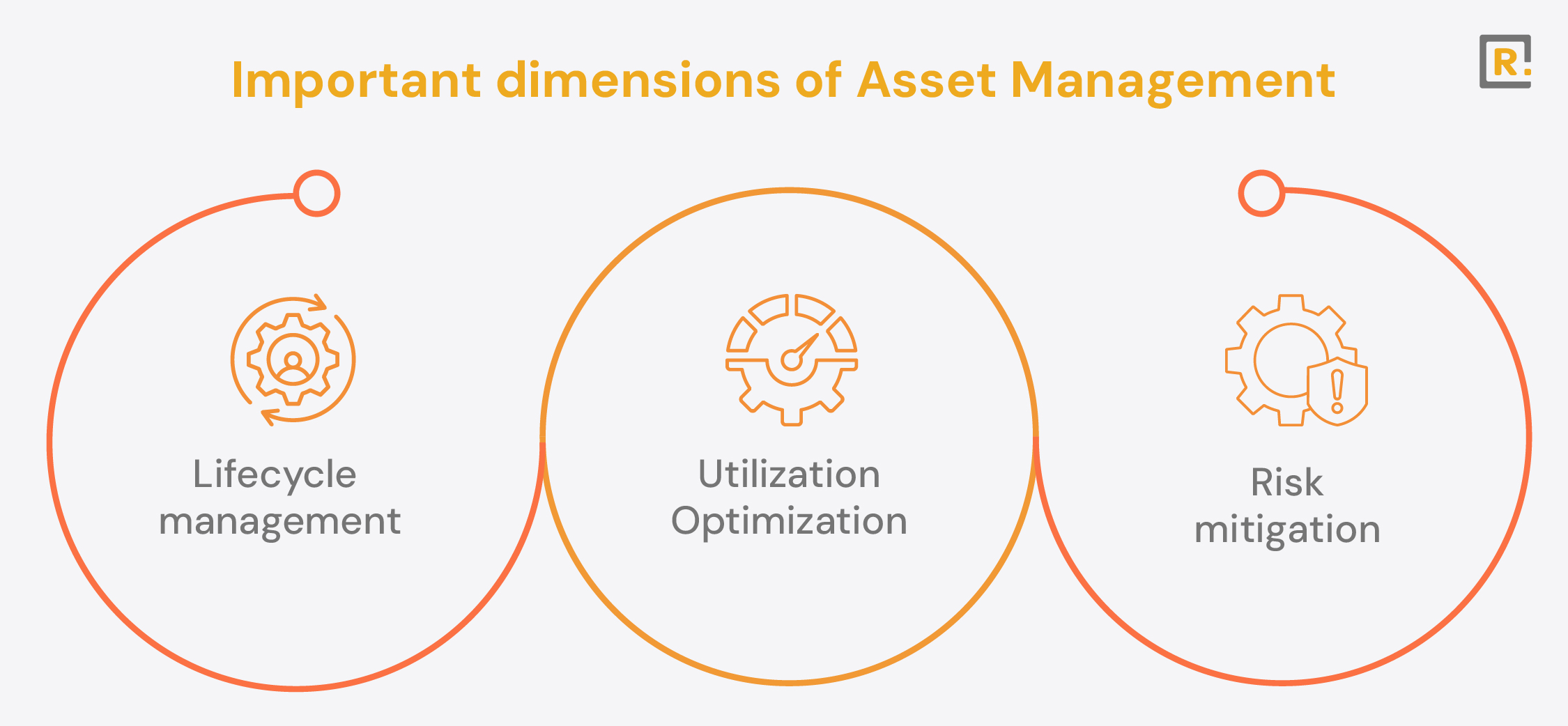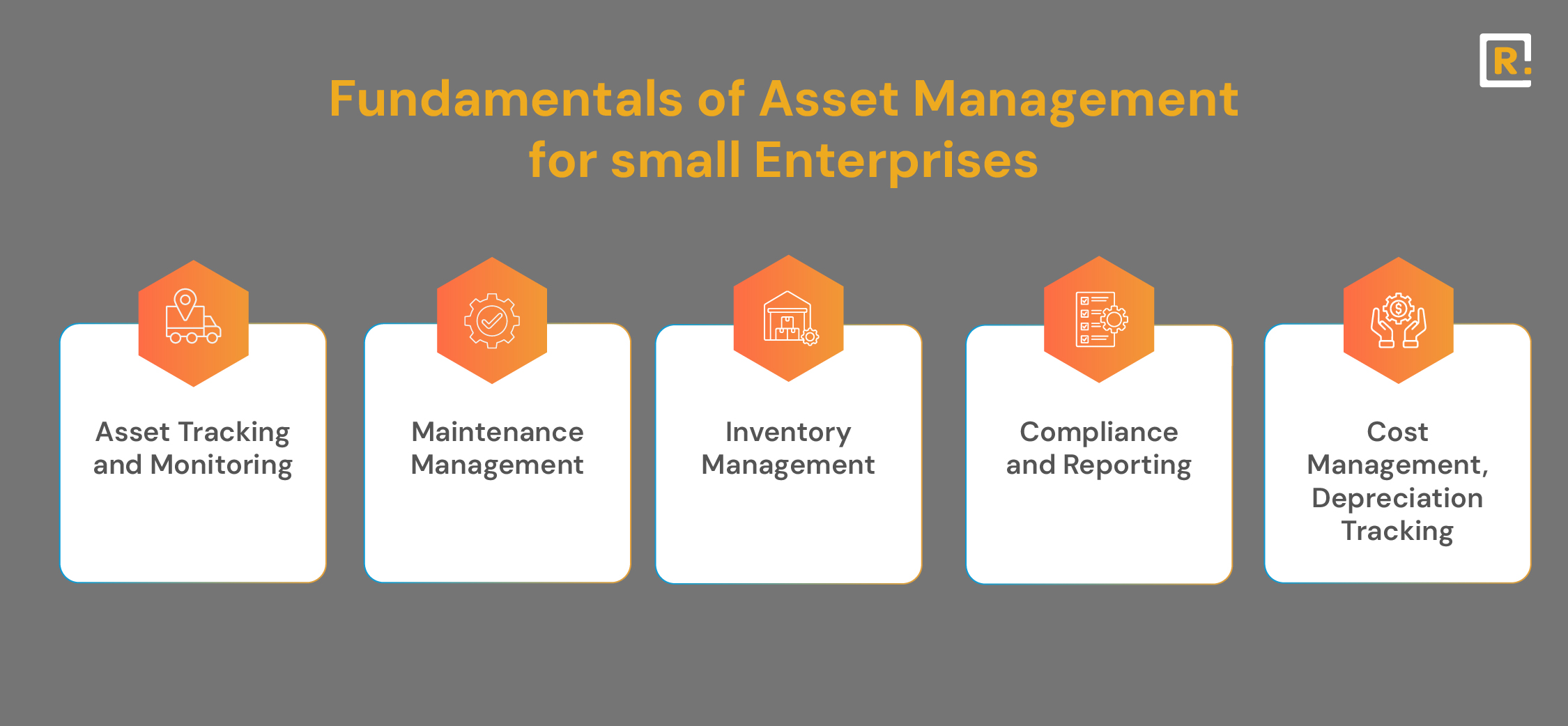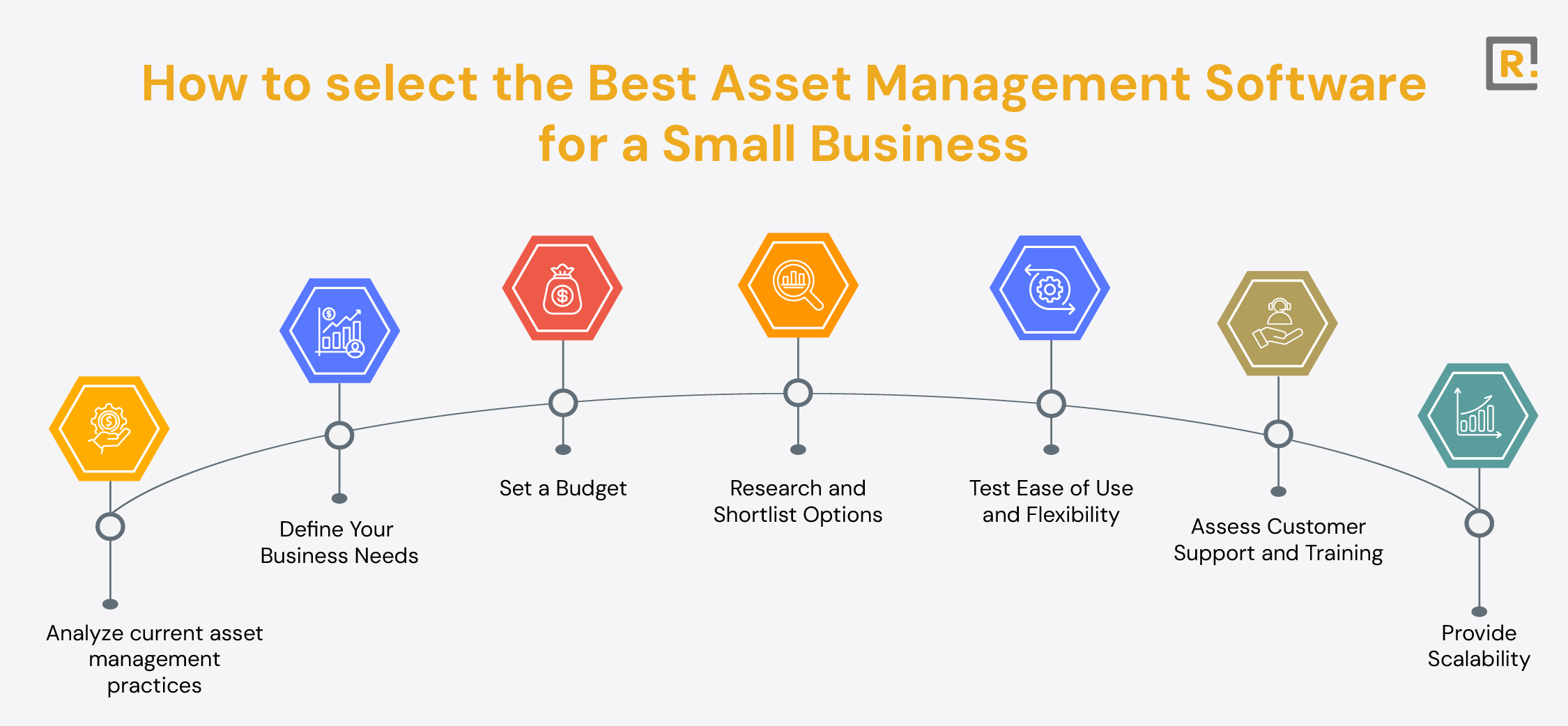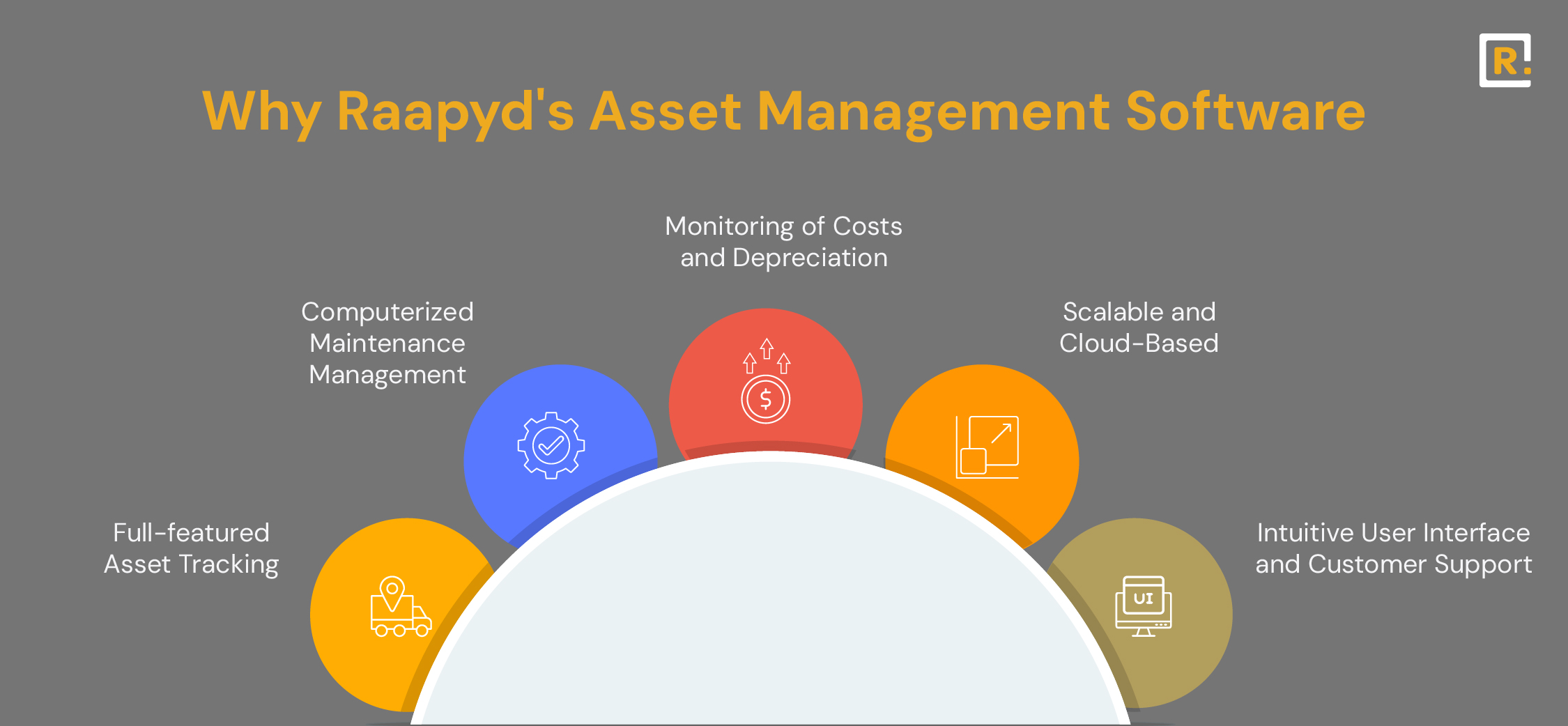-
Solutions
Vendor Management Efficient vendor management platformField Service Management Effective onsite service operationsReal Estate Management Efficient real estate managementAsset Management Efficient asset lifecycle managementDistribution Management System Optimized supply chain distributionDigital Retail Solution Integrated e-commerce solutionsSubscription and Billing System Automated billing and subscriptionsSales Force Automation Optimized sales process automationIntelligent Character Recognition Software Automated text conversion and data extraction
- Why Raapyd
- Insights
- About
Choosing the Right Asset Management Software for Small Businesses
- Asset Management

Streamlining operations is the lifeline of budding businesses. Sadly, growth occurs when business owners fail to manage the organization’s assets.
Ideal asset management software is critical to your business’s future. A robust solution helps maximize the life of assets through preventive maintenance, improves asset utilization, and prevents theft.
But with numerous solutions flooding the market, how do you know which asset management software is right for your small business?
Let’s find out as we learn more about selecting the right asset management software. Continue reading as we identify essential features to seek and discuss how Raapyd’s solution can fulfill those requirements.
The Challenge for Budding Businesses
Numerous organizations face challenges in managing assets.
Asset management software provides an integrated platform for organizations to control all types of enterprise assets. Whether physical or non-physical, it tracks the location, usage, and due date for maintenance of the assets.
It generates detailed reports that provide an updated view of the asset’s life cycle. This helps small enterprises scale up business operations and promote better decision-making processes.
What Small Businesses need to know about Assets Management.
Small businesses usually operate on shoestring budgets, so those resources must be managed appropriately.
The word “asset” can mean equipment—an office, vehicle, or virtual tools, such as software, licenses, and intellectual property (along with the money itself) for businesses of such scale.
With effective asset management, an organization can avoid financial loss due to theft, loss, obsolescence, or ineffective deployment.
Small businesses must understand that asset management involves more than inventory monitoring. It also uses assets that must be adequately maintained and replaced immediately.
It also involves planning to maximize the longevity of the assets and reduce ownership costs.
Fundamentally, small firms need to focus on three important dimensions of asset management:
- Lifecycle management: It deals with managing an organization’s assets right from acquisition to retirement.
- Utilization Optimization: It refers to the increasing value obtainable from every asset through assurance of its effective use.
- Risk mitigation: To minimize theft, breakdowns, or regulatory non-compliance.
Therefore, asset management software developed for small businesses will easily automate such processes and provide great insight.
Where Would You Begin with Asset Management Software for Small Businesses?
What’s the best asset management software for your organization?
Establishing your small business’s requirements is paramount, as both will likely differ.
Do you want to track physical assets, like office equipment or fleet vehicles? You may need a program that tracks digital assets, like software licenses or copyright information. You could also optimize your maintenance schedules for maximum uptime.
Once you are clear with your objectives around asset management, it becomes essential to evaluate various factors, including budgetary constraints, user-friendliness, and scalability. The ideal solution in such cases must address your present requirements and possess the capacity to expand alongside your enterprise.
Another important aspect is the deployment type. One can choose between a cloud-based or an on-premise solution. Cloud-based solutions natively serve small businesses much better, with lower upfront hardware costs, automatic updating, and availability from any device connected to the Internet.
What are Sales Force Automation Benefits?
The benefits of Sales Force Automation are not confined to saving time. Organizations with an SFA structure have been recorded as saving time and boosting their sales activities, customer relations, and general organizational productivity. The following are some of the benefits associated with the use of Salesforce Automation:
Time-saving
Sales Force Automation saves time by automating the more routine and time-consuming tasks. Salespeople can spend this time interacting with prospects, closing deals, and nurturing customer relationships rather than entering data or managing administrative tasks. This high focus on sales activities will improve sales performance and raise revenue.
Improved Sales Productivity
SFA systems empower sales teams to manage leads, track opportunities, and report performance. Automated task management and real-time status updates free up sales representatives to focus on more valuable elements in the sales cycle, leading to increased productivity and conversion rates.
Better Accuracy of Data
Data accuracy is key to good decision-making and quality customer servicing. Since address information or other data types are entered manually, errors are likely. SFA minimizes this risk due to automation during data input and updating. This guarantees that a business always has the correct and most current information.
Improved Customer Relations
The SFA systems provide critical data on customer preferences, purchase history, and past interactions with the sales team. With such information, salespeople would customize their approaches to every customer and have relevant and timely communication.
Precise Sales Forecasting
Sales Force Automation systems provide advanced analytics and reporting that enable businesses to predict their sales more accurately in the future. Based on historical data analysis and the prevailing activity within the pipeline at the given time, the SFA tools will provide predictive insights that enable a business to plan effectively, set realistic goals, and allocate the necessary resources in proper proportions.
Reduced Human Error
SFA minimizes the possibilities of human error by automating most of the entries for data, report generation, or any other administrative work. This guarantees precise records, dependable forecasts, and a stable sales flow.
Increased Sales Team Accountability
SFA allows managers to track the performance of a single sales rep or a team during a particular period. It can feature detailed reports on key performance measures that could help managers identify areas for improvement and hold teams accountable for meeting targets.
Fundamentals of Asset Management that Small Enterprises Need to Understand
When selecting asset management software for your small business, some of the core aspects of asset management should not be overlooked. These include:
Asset Tracking and Monitoring
Real-time visibility into where different assets are at any given time is critical. Whether it’s equipment, IT equipment, or vehicles, an asset’s location and status will prevent possible misuse, loss, or even theft. The software should enable businesses to keep track of their asset location, history of use, and assignment.
Maintenance Management
Any good asset management system would possess a preventive maintenance feature. This feature warns the user if a particular piece of equipment requires servicing. Such benefits reduce the chances of sudden downtime and prevent costly repairs.
Inventory Management
Small enterprises typically possess restricted inventory and are required to optimize their stock levels. Asset management software should enable these businesses to monitor inventory levels, observe usage trends, and oversee restocking. This ensures that resources are utilized effectively and expenditures remain manageable.
Compliance and Reporting
Small businesses are subject to numerous regulatory requirements, including health and safety. The asset management software should furnish relevant features based on compliance management that trace and track asset-related compliance with standards and on the fly. These features are most useful in industries with strict regulations.
Cost Management, Depreciation Tracking
Understanding the cost and value of assets is essential in making responsible financial decisions. The management system should provide functionality so that users can track acquisition costs, maintenance spending, and write-downs of their assets. This functionality significantly benefits organizations by helping them understand the total cost of ownership and plan budgets for future replacements or upgrades.
How do you select the Best Asset Management Software for a Small Business?
It requires a proper plan and consideration of many essential factors while choosing appropriate asset management software. Small businesses can follow these steps to ensure that they find a solution that meets their particular needs:
Analyze current asset management practices
Before selecting any software, assess your current asset management processes. Identify where you face challenges, such as tracking assets, managing maintenance, or staying compliant. These pain points will give you a clear idea of what features are highly required in the software solution.
Define Your Business Needs
Once your challenges are defined, define your business requirements in detail. List down what software you need for your business daily: asset tracking, reporting, compliance, or maintenance management. This will narrow your options.
Set a Budget
Asset management software can be sourced from low-cost cloud solutions, moderate-priced on-premise, or higher-priced on-premise systems. Prepare a budget based on the return the software will bring to your business. Consider the initial costs and recurring maintenance or subscription fees that occur.
Research and Shortlist Options
Approach to find software solutions that meet your company’s needs and fit your company’s budget. Research different user experiences, case studies, and customer reviews of a given software to its effectiveness. Lastly, you should verify if the software is small business-specific or pitched to big corporations first.
Test Ease of Use and Flexibility
Ease of operation is a key requirement for a small business, especially when no IT department exists. Get software with an intuitive interface that your team can learn to use quickly. Also, look for flexibility—software that allows you to make it work according to your business processes.
Assess Customer Support and Training
Determine whether the software vendor will provide extensive customer support through technical assistance and training materials. This feature is essential in ensuring your team can get the most out of the software and solve problems promptly.
Provide Scalability
Your asset management needs will grow with the growth of the business. Select software with scalability, whether adding features, the number of users, or integrating the systems the future may bring.
How can Raapyd’s Asset Management Software be beneficial to small businesses?
Raapyd’s Asset Management Software is designed to meet the needs of small businesses. It provides a low-cost yet comprehensive solution to enable organizations to manage, monitor, and optimize their assets. The following lists the benefits of Raapyd’s Small Business Software:
Full-featured Asset Tracking
Raapyd’s Asset Management Software offers immediate monitoring of both physical and digital assets, affording enterprises comprehensive insight into their resources. This software facilitates the observation of asset locations, usage records, and assignments, guaranteeing that all assets are accounted for and used effectively.
Computerized Maintenance Management
In such a system, maintenance schedules for equipment servicing are programmed so that future service and inspection are noticed. Precautionary maintenance alerts decrease the chances of unforeseen failures and expensive repairs. This system is critically helpful for businesses whose equipment requires regular maintenance.
Monitoring of Costs and Depreciation
Raapyd’s Asset Management Software offers comprehensive tracking of expenses and depreciation associated with each asset, enabling organizations to comprehend the total cost of ownership. This functionality facilitates budgeting, financial forecasting, and decision-making regarding the appropriate timing for asset replacement or upgrades.
Scalable and Cloud-Based
Raapyd’s solution is cloud-based, which reduces initial costs and allows access from any internet-enabled device. Its software design allows scalability so that, as a small enterprise grows, more assets and users can be added, assuring continued use as the enterprise grows.
Intuitive User Interface and Customer Support
Raapyd’s Asset Management Software is designed to be easy to use and intuitive, requiring minimal staff training. Again, the company offers full customer support, ensuring all questions and issues are promptly resolved for minimum downtime and increased productivity.
Conclusion
Asset management software selection is one of the most crucial decisions for any small enterprise, directly affecting its efficiency, productivity, and profitability. Carefully weighing your business’s asset management needs, defining your requirements, and comparing the options will lead you to the best solution that fits your goals.
Raapyd’s Asset Management Software provides an affordable, flexible, and robust solution for easily tracking and managing small business assets for proper tracking and cost optimization. With Raapyd, one can be assured that company assets are well-managed and compliant and that successful outcomes are accrued.
With the right asset management software in place, you’ll have more tools and better insight as your business grows to maximize the value of your assets, reduce costs, and make well-informed decisions for the future.
Discover More
Enhance Your Business Asset Strategy
Unlock the full potential of Asset management with Raapyd’s cutting-edge solutions.




